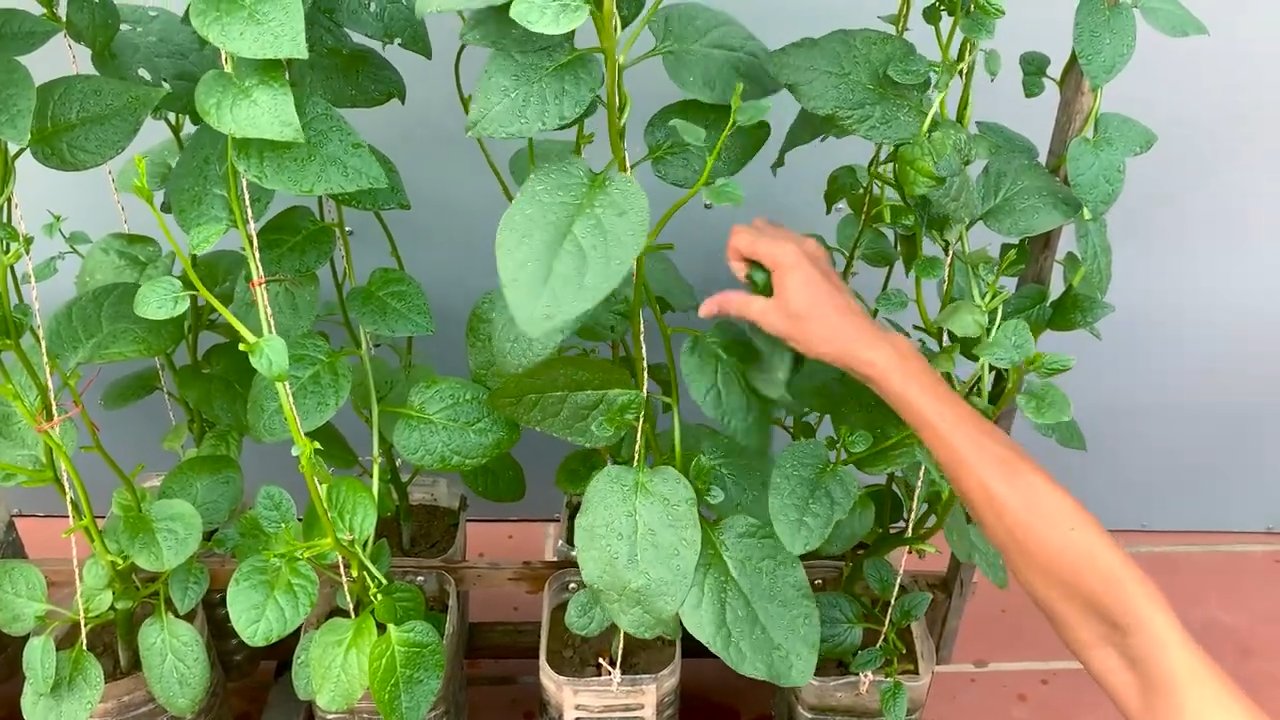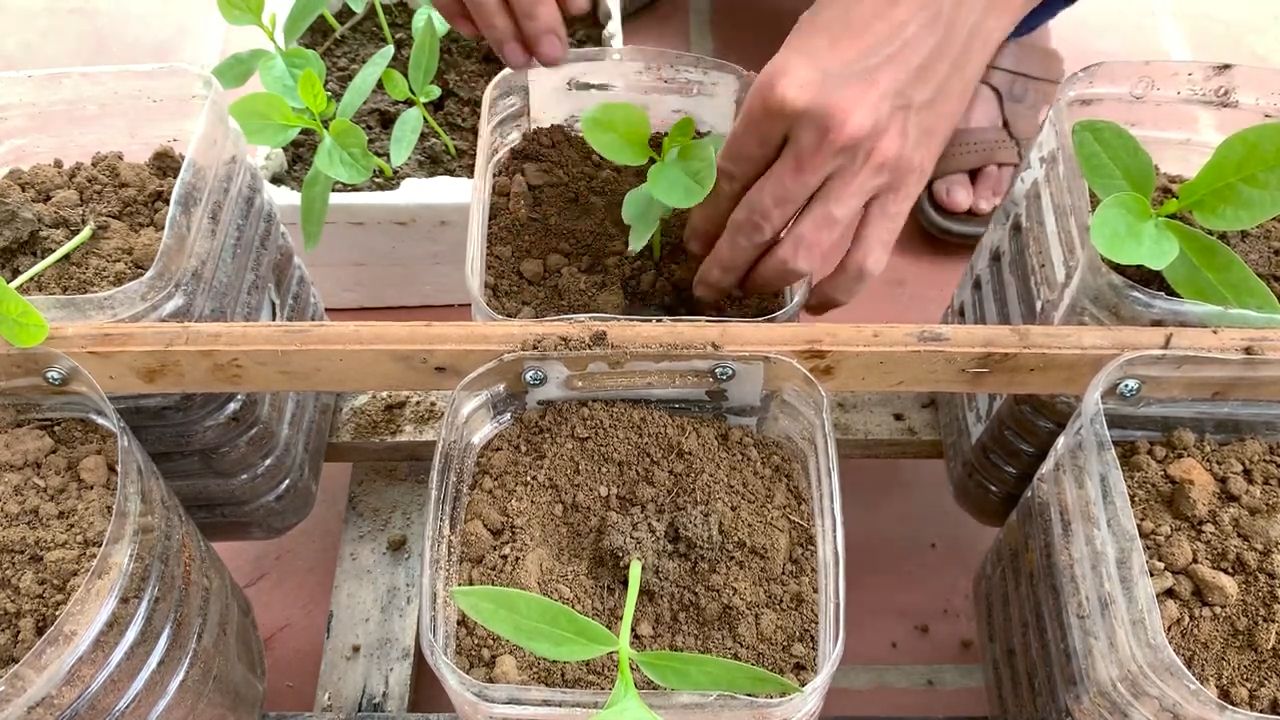Easy spinach growing routine – that’s what every gardener, from beginner to seasoned pro, dreams of, right? I know I do! Imagine stepping outside and harvesting fresh, vibrant spinach leaves for your salad, smoothie, or stir-fry, all thanks to a simple, effective routine. No more struggling with bolting, pests, or lackluster growth. This isn’t just about growing spinach; it’s about unlocking a sustainable source of healthy greens right in your backyard.
Spinach has a rich history, dating back over 2,000 years to ancient Persia. It gradually made its way across the globe, becoming a staple in cuisines worldwide. Beyond its culinary uses, spinach has long been recognized for its nutritional power, packed with vitamins, minerals, and antioxidants. But let’s be honest, sometimes growing it can feel like a battle!
That’s where this DIY guide comes in. So many people struggle with getting a consistent harvest of spinach. They face issues like poor germination, pest infestations, and premature bolting (when the plant flowers and the leaves become bitter). This easy spinach growing routine will equip you with the knowledge and simple hacks to overcome these challenges. I’m going to share my tried-and-true methods for creating the perfect growing environment, selecting the right varieties, and implementing a watering and feeding schedule that will have your spinach thriving. Get ready to enjoy a continuous supply of delicious, nutritious spinach with minimal effort!

Growing Spinach Like a Pro: My Foolproof DIY Guide
Okay, so you want to grow spinach? Awesome! It’s easier than you think, and nothing beats the taste of fresh, homegrown spinach. I’ve been growing my own for years, and I’m going to share all my secrets with you. This guide will walk you through everything, from choosing the right spot to harvesting your delicious leafy greens. Let’s get started!
Choosing the Right Spinach Variety
First things first, let’s talk spinach varieties. There are a few different types, and knowing the difference can really impact your success.
* Savoy Spinach: This is the kind you often see in the grocery store with crinkled leaves. It’s cold-hardy, which is great for fall and winter growing.
* Semi-Savoy Spinach: A good middle ground. It has slightly crinkled leaves and is more bolt-resistant than Savoy.
* Smooth-Leaf Spinach: My personal favorite! It’s easy to clean and has a mild flavor. It’s also great for baby spinach.
I usually go for a smooth-leaf variety like ‘Space’ or ‘Giant Nobel’ because I love using it in salads. But honestly, any of these will work, so pick one that sounds good to you!
Preparing Your Spinach Growing Area
Spinach loves a sunny spot, but it can tolerate some shade, especially in hotter climates. Aim for at least 4-6 hours of sunlight per day. The soil is also super important. Spinach needs well-drained soil that’s rich in organic matter.
* Sunlight: 4-6 hours of direct sunlight is ideal.
* Soil: Well-drained, fertile soil with a pH between 6.5 and 7.0.
* Location: Choose a spot that’s protected from strong winds.
Testing and Amending Your Soil
Before you plant anything, it’s a good idea to test your soil’s pH. You can buy a soil testing kit at most garden centers. If your soil is too acidic (pH below 6.5), add some lime to raise the pH. If it’s too alkaline (pH above 7.0), add some sulfur to lower it.
To improve the soil’s fertility and drainage, I always add plenty of compost. Compost is like magic for your garden! It adds nutrients, improves drainage, and helps retain moisture. Work a few inches of compost into the top layer of soil before planting.
Planting Your Spinach Seeds
Spinach is a cool-season crop, which means it grows best in cooler temperatures. The ideal temperature range is between 50°F and 70°F. You can plant spinach in early spring or late summer/early fall.
* Timing: Early spring or late summer/early fall.
* Spacing: Sow seeds about 1 inch apart and ½ inch deep.
* Watering: Keep the soil consistently moist until the seeds germinate.
Here’s a step-by-step guide to planting your spinach seeds:
1. Prepare the soil: Rake the soil smooth and remove any rocks or debris.
2. Make furrows: Use your finger or a garden tool to create shallow furrows about ½ inch deep. Space the furrows about 12 inches apart.
3. Sow the seeds: Sprinkle the spinach seeds into the furrows, spacing them about 1 inch apart.
4. Cover the seeds: Gently cover the seeds with soil.
5. Water thoroughly: Water the soil gently but thoroughly. You don’t want to wash the seeds away.
6. Mark the rows: Use plant markers to label the rows so you know what you planted.
Caring for Your Spinach Plants
Once your spinach seeds have germinated (usually in about 5-10 days), it’s important to provide them with proper care.
* Watering: Water regularly, especially during dry periods. Spinach needs consistent moisture to thrive.
* Thinning: Once the seedlings are a few inches tall, thin them to about 3-6 inches apart. This will give them enough room to grow.
* Weeding: Keep the area around your spinach plants free of weeds. Weeds compete with spinach for nutrients and water.
* Fertilizing: Spinach is a heavy feeder, so it benefits from regular fertilization. Use a balanced fertilizer or side-dress with compost.
Watering Tips
Spinach needs about 1 inch of water per week. Water deeply and less frequently, rather than shallowly and more often. This encourages the roots to grow deeper, making the plants more drought-tolerant. I like to water in the morning so the leaves have time to dry before nightfall, which helps prevent fungal diseases.
Thinning for Better Growth
Thinning is crucial for healthy spinach growth. When the seedlings are about 2-3 inches tall, carefully remove some of the plants so that the remaining plants are spaced about 3-6 inches apart. You can eat the thinned seedlings as baby spinach!
Dealing with Pests and Diseases
Spinach is generally pretty easy to grow, but it can be susceptible to a few pests and diseases.
* Aphids: These tiny insects suck the sap from plants. You can control them with insecticidal soap or by blasting them off with a strong stream of water.
* Slugs and Snails: These pests can munch on the leaves of your spinach plants. You can control them with slug bait or by hand-picking them off the plants.
* Downy Mildew: This fungal disease can cause yellow spots on the leaves. To prevent downy mildew, make sure your plants have good air circulation and avoid overhead watering.
I’ve found that a good organic insecticide spray can work wonders if you catch any infestations early. Also, companion planting with things like marigolds can help deter pests naturally!
Harvesting Your Spinach
You can start harvesting spinach when the leaves are about 4-6 inches long.
* Timing: Harvest when the leaves are 4-6 inches long.
* Method: Cut the outer leaves with a sharp knife or scissors, leaving the inner leaves to continue growing.
* Frequency: Harvest regularly to encourage continued production.
Here’s how I harvest my spinach:
1. Choose the leaves: Select the outer leaves that are large enough to harvest.
2. Cut the leaves: Use a sharp knife or scissors to cut the leaves at the base of the plant.
3. Leave the inner leaves: Leave the inner leaves to continue growing.
4. Repeat: Harvest regularly to encourage continued production.
Extending Your Harvest
To extend your spinach harvest, you can succession plant. This means planting a new batch of seeds every few weeks. This will ensure that you have a continuous supply of fresh spinach throughout the growing season.
Also, if you live in a hot climate, you can try growing spinach in the shade during the summer months. This will help keep the plants cool and prevent them from bolting (going to seed).
Storing Your Harvested Spinach
Freshly harvested spinach is best used right away, but you can store it in the refrigerator for a few days.
* Washing: Wash the spinach thoroughly to remove any dirt or debris.
* Drying: Dry the spinach with a salad spinner or paper towels.
* Storing: Store the spinach in a plastic bag or container in the refrigerator.
I like to wrap my spinach in a paper towel before putting it in a plastic bag. The paper towel helps absorb excess moisture, which keeps the spinach fresher for longer.
Enjoying Your Homegrown Spinach
Now for the best part: enjoying your homegrown spinach! There are so many ways to use it.
* Salads: Add fresh spinach to your favorite salads.
* Smoothies: Blend spinach into smoothies for a healthy boost.
* Soups: Add spinach to soups and stews.
* Sautéed: Sauté spinach with garlic and olive oil.
* Omelets: Add spinach to omelets and frittatas.
My favorite way to eat spinach is in a simple salad with a vinaigrette dressing. But honestly, you can’t go wrong with fresh, homegrown spinach!
Troubleshooting Common Spinach Problems
Even with the best care, you might encounter a few problems when growing spinach. Here are some common issues and how to fix them:
* Spinach bolting (going to seed): This happens when the weather gets too hot. To prevent bolting, plant spinach in the shade during the summer months and choose bolt-resistant varieties.
* Yellowing leaves: This can be caused by a nutrient deficiency. Fertilize your spinach plants with a balanced fertilizer.
* Slow growth: This can be caused by poor soil or lack of sunlight. Make sure your spinach plants are getting enough sunlight and that the soil is fertile

Conclusion
So, there you have it! Transforming your kitchen scraps into a thriving spinach patch is not only incredibly rewarding but also surprisingly simple. This DIY trick for growing spinach from kitchen scraps is a game-changer for anyone looking to reduce waste, save money, and enjoy the freshest, most flavorful greens imaginable. Forget those limp, pre-packaged spinach bags from the grocery store. Imagine stepping outside your door and harvesting vibrant, nutrient-packed spinach leaves whenever you need them.
This isn’t just about growing spinach; it’s about connecting with your food, understanding its life cycle, and embracing a more sustainable lifestyle. The satisfaction of nurturing a plant from a discarded stem to a flourishing vegetable is unparalleled. Plus, you’ll be amazed at how much better homegrown spinach tastes compared to store-bought varieties. The flavor is brighter, the texture is crisper, and you know exactly where it came from and what went into growing it.
But the benefits don’t stop there. Growing your own spinach allows you to control the growing environment, ensuring that your plants are free from harmful pesticides and herbicides. You can choose organic methods and nourish your spinach with natural fertilizers, resulting in a healthier and more nutritious crop.
Don’t be afraid to experiment with different varieties of spinach. There are numerous types, each with its own unique flavor and texture. Try growing baby spinach for salads, savoy spinach for cooking, or even New Zealand spinach, which is more heat-tolerant and perfect for warmer climates. You can also explore different growing mediums. While we’ve focused on soil, hydroponics is another exciting option for growing spinach indoors.
Consider adding companion plants to your spinach patch. Marigolds can help deter pests, while basil can improve the flavor of your spinach. Experiment with different combinations to find what works best for you.
We understand that gardening can sometimes seem daunting, but this DIY trick is designed to be accessible to everyone, regardless of their experience level. Even if you’ve never grown anything before, you can successfully grow spinach from kitchen scraps. Just follow the simple steps outlined above, and you’ll be well on your way to enjoying a bountiful harvest.
This easy spinach growing routine is a must-try for anyone who loves fresh, healthy food and wants to reduce their environmental impact.
We encourage you to give this DIY trick a try and share your experiences with us. Post photos of your spinach patch on social media using #HomegrownSpinach and let us know what you’ve learned. We’re eager to see your success stories and learn from your experiences. Together, we can create a community of passionate gardeners who are committed to growing their own food and living more sustainably. So, grab those spinach stems, get your hands dirty, and start growing your own delicious, homegrown spinach today! You won’t regret it.
Frequently Asked Questions (FAQ)
1. What part of the spinach do I need to regrow it?
You’ll need the base of the spinach bunch, the part where the stems are connected. This is where the roots will sprout from. Make sure to leave about an inch or two of the stems attached to the base. Avoid using spinach that is already wilted or showing signs of decay, as it may not be viable for regrowth.
2. How long does it take for spinach to regrow?
You should start to see new growth within a week or two. The exact time will depend on factors such as temperature, sunlight, and the overall health of the spinach base. Be patient and continue to provide the necessary care, and you’ll be rewarded with fresh spinach leaves.
3. What kind of soil is best for growing spinach?
Spinach prefers well-draining soil that is rich in organic matter. A slightly acidic to neutral pH (around 6.5 to 7.0) is ideal. You can amend your soil with compost or other organic materials to improve its fertility and drainage. If you’re growing spinach in containers, use a high-quality potting mix.
4. How much sunlight does spinach need?
Spinach needs at least 6 hours of sunlight per day to thrive. However, it can tolerate some shade, especially in hotter climates. If you’re growing spinach indoors, place it near a sunny window or use grow lights to provide adequate light.
5. How often should I water my spinach?
Keep the soil consistently moist, but not waterlogged. Water spinach regularly, especially during dry periods. Check the soil moisture by sticking your finger into the soil. If the top inch feels dry, it’s time to water. Avoid overwatering, as this can lead to root rot.
6. Can I grow spinach indoors?
Yes, spinach can be successfully grown indoors, especially during colder months. Choose a sunny location or use grow lights to provide adequate light. Use a well-draining potting mix and water regularly. You may also need to provide supplemental humidity, especially in dry indoor environments.
7. What are some common pests and diseases that affect spinach?
Common pests that affect spinach include aphids, spider mites, and leaf miners. Diseases include downy mildew and white rust. Inspect your plants regularly for signs of pests or diseases and take appropriate action. Organic pest control methods, such as insecticidal soap or neem oil, can be effective. Ensure good air circulation to prevent fungal diseases.
8. How do I harvest spinach?
You can harvest spinach leaves as soon as they are large enough to eat. Simply cut the outer leaves with scissors or a knife, leaving the inner leaves to continue growing. This will allow you to harvest spinach multiple times from the same plant.
9. Can I grow spinach from seed instead of kitchen scraps?
Yes, you can definitely grow spinach from seed. This is a more traditional method of growing spinach. Sow the seeds directly into the soil in early spring or fall. Keep the soil moist and thin the seedlings as needed. Growing from seed allows you to choose from a wider variety of spinach types.
10. How can I make my spinach sweeter?
The sweetness of spinach is influenced by several factors. Cooler temperatures generally result in sweeter spinach. Also, ensuring the plant receives adequate sunlight and consistent watering can improve its flavor. Harvesting spinach in the morning, after the dew has dried, can also enhance its sweetness.
11. What are some variations I can try with this DIY spinach growing method?
You can experiment with different types of containers, such as raised beds or vertical gardens. You can also try growing spinach in different growing mediums, such as hydroponics or aquaponics. Another variation is to try growing different varieties of spinach, such as baby spinach, savoy spinach, or New Zealand spinach.
12. My spinach is bolting (going to seed). What can I do?
Bolting occurs when spinach is exposed to high temperatures or long days. Once spinach bolts, the leaves become bitter and less palatable. To prevent bolting, plant spinach in early spring or fall, when temperatures are cooler. Provide shade during the hottest part of the day. If your spinach does bolt, you can still harvest the seeds for future planting.




Leave a Comment